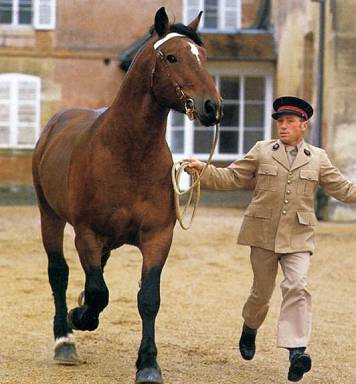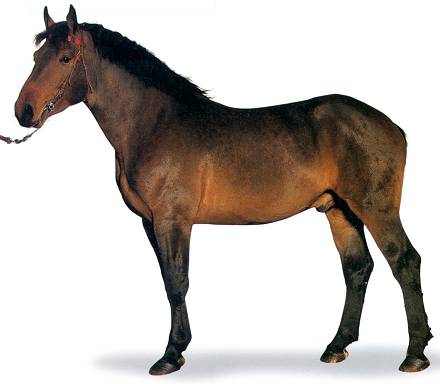|
Norman Cob |
|||
  ( Larger image ) ( Larger image) |
|||
| Country of Origin: | France (Normandy, La Manche) | Origin: | 19-20th century |
| Color: | Chestnut, Bay, Occasionally Red-roan or Grey |
Temperament: | |
| Feathers: | little or none | Other: | Energetic Action, Lively, free-moving trot |
| Height (4" each): | 15.3 - 16.2 Hands | Blood: | Cold |
| Uses: | Light Draft | Influences: | Norman Draft |
| Conformation: | Overall strong, stocky built with short, well-proportioned | ||
| Notes: | The Norman Cob
is a light draft horse, still in use on small farms in the La Manche
region of Normandy. Normandy has long been famed for its horse breeding,
notably at the historic studs of Le Pin (founded as a royal stud in the
mid-seventeenth century) and Saint-Lo, where the ancestors of the modern
Cob were bred.
Stocky and compact, like the English Cob after which it was named, the Norman Cob was developed as a distinct breed at the beginning of this century. It was at that time tat the breeders of half-bred horses first began to distinguish between those animals suitable for use as riding horses, particularly for the army, and those of less quality and sturdier built, more suited to light draught work. The Norman Cob, as the heavier type was subsequently named, because a popular workhorse, especially in the La Manche region - even the powerful Percheron failed to supplant it there. Over the years there has been a tendency for the Norman Cob to become heavier, to cope with the work required of it, but although it is undoubtedly sturdy and muscular, it lacks the massive stature of the true heavy horse and has never lost the energetic action, particularly at trot, characteristic of the half-bred horse. |
||